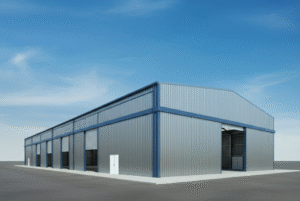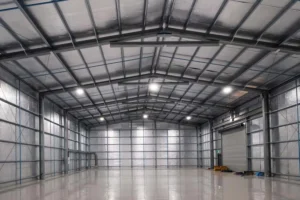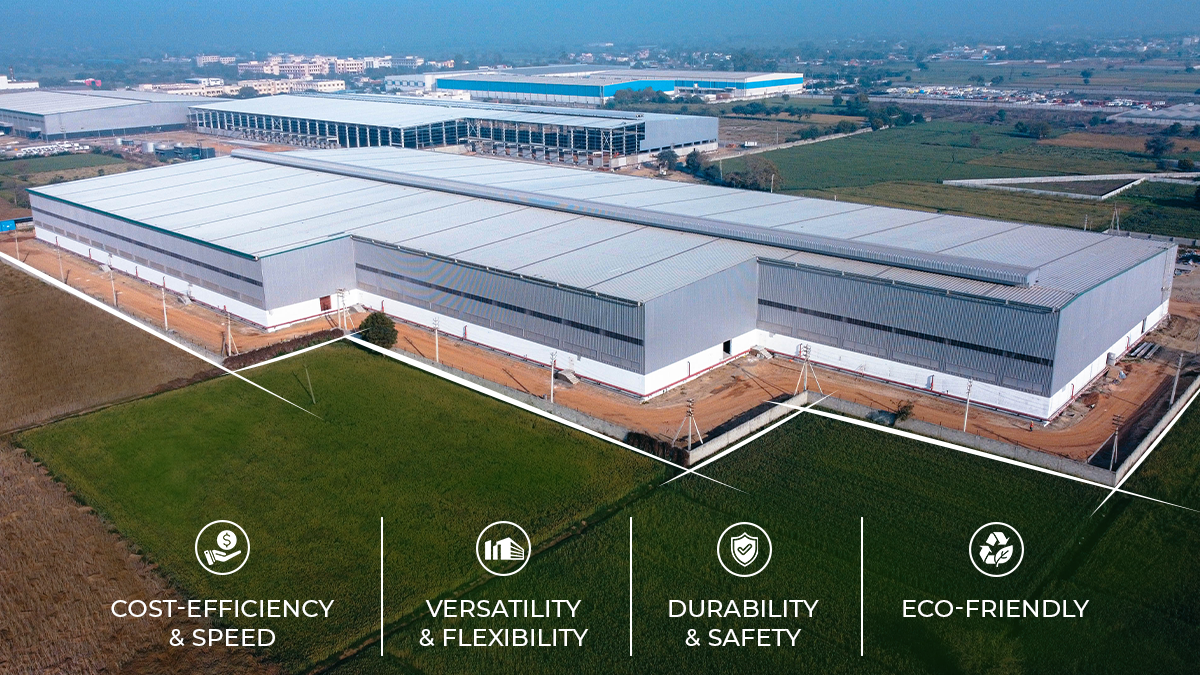
Engineer Volkert Charts Big Growth Via Texas Highway Work
[ad_1]
Although headquartered in Mobile, Ala., Volkert traces its roots back to a small office in New Orleans. One hundred years since its founding, the nationally ranked company—currently No. 90 on ENR’s Top 500 Design Firms list—boasts more than 1,700 employees across more than 60 offices nationwide. For the last decade, a significant portion of that growth has been in Texas, expanding from one employee to 160 across eight offices in the state. Following a string of work on major TxDOT projects, Volkert ranks No. 21 on this year’s ENR Texas & Southeast Top Design Firms list. In light of its significant growth in the region, Volkert was named Design Firm of the Year for the Texas & Louisiana region.
Growth Strategy
Volkert has seen tremendous growth in the Southern states recently, increasing its revenue by 21.7% from 2023 to 2024 in the Texas and Southeast regions. While its Southeast revenue is certainly notable—up 15.4% in that timeframe—its Texas & Louisiana results are a standout—up by an eye-popping 48.8%. The employee-owned firm continues to bank on its solid foundation in Louisiana. Volkert cemented its reputation on a national scale when it designed the Lake Pontchartrain Causeway in the 1950s, which remains the longest continuous bridge over water today.
Volkert’s work at the Port of New Orleans, one of the nation’s most historic and significant ports, dates back to the company’s founding 100 years ago. Work at Port NOLA continues to this day. Among its recent projects, Volkert provided construction phase services for the Nashville Avenue Wharf project. The project, which modernized a wharf warehouse facility to accommodate containerized shipping, won the 2024 Best Project in the airport/transit category for ENR Texas & Louisiana.
Additionally, Volkert is currently serving as the construction engineering and inspection firm for Phase I of the I-10 CMAR widening project in Baton Rouge, La. The project, which has the potential to be the largest infrastructure project in the state, will widen four miles of I-10 from the Mississippi River Bridge from six to eight lanes to the I-10/I-12 split.

Volkert designed the Lake Ponchartrain Causeway, which remains the longest continuous bridge over water in the world.
Image courtesy of Volkert
Bigger in Texas
While the firm’s foothold in Louisiana remains a steady source of business, the main driver of growth in the region has been its Texas operations. As the company has built a staff of more than 160 employees in the state, it has also been able to leverage expertise across the entire organization. Trevor Reed, vice president and Southwest region director of engineering at Volkert, says the company is positioned to act as a small community-based office with access to significant resources. “We aim to be big enough to matter and small enough to care,” he adds.
Although Volkert has long established itself in multiple Southern states over its history, the firm did not commit to Texas until 2014. Led by Travis Falls, senior vice president at Volkert, the firm adopted the small-office, big-firm model early. “My intent was always to start off with these small offices around Texas, growing into areas that had good environments for engineering folks as well as engineering clients,” he says.
“When you do good work and provide good customer service, growth will come ex-ponentially.”
— Travis Falls, Senior Vice President, Volkert
The firm’s Texas portfolio started modestly with a $30,000 sidewalk project for the city of Early. But it had a grander vision in mind, focusing on garnering TxDOT work. Falls says the firm’s first big move came in 2015, when it acquired the CEI business of a DBE firm in the state. By the end of the year, the firm had 20 employees, including several former TxDOT employees brought on through the acquisition.
Given the lengthy timelines of TxDOT projects, Volkert’s prospects potentially faced a long road. However, the firm fast-tracked that effort by landing a contract in 2017 to design a $107-million IH-35 interchange project in San Marcos. The project, which completed in 2024, included five bridges, reconstructed intersections and ramps, improved pedestrian and bike facilities and a new IH-35 structure to meet freight clearance requirements.
Following that project win, the firm’s success soared, landing contracts to serve as lead engineer on the Central and North sections of the IH-35 Capital Express project in Austin. Its scope included delivering engineering design services to enhance safety, mobility and regional connectivity in downtown Austin. The $600-million CAPEX North portion included a complete reconstruction of 12 miles of IH-35 through north Austin and a complex interchange design with a diverging diamond.
The $3-billion CAPEX Central portion will reconnect east and west communities by covering the interstate with “caps” to create park space above IH-35 as well as adding shared-use paths for pedestrians and bicyclists. The project includes the engineering design for IH-35 tunneling, structural retrofit of upper decks, interchanges, signals, ITS, ramps, retaining walls, utilities and bridges.

Volkert served as the prime engineering firm for the $107-million IH-35 at SH 123 intersection reconstruction in San Marcos, Texas. It completed last year.
Image courtesy of Volkert
Customer Focus
While delivering its scope on time and on budget is a must, Falls says the firm has added an extra emphasis on customer service. Starting with no experience in the state, Falls says being a good partner on projects has been critical in establishing its reputation. “When you do good work and provide good customer service, growth will come exponentially,” he says. “It typically takes long, steady, slow growth for everybody to get their name out, but then the proof is in the pudding. Did you do what you said you were going to do?”
Tommy Abrego, Mobility35 program manager for TxDOT’s Austin district, says Volkert has excelled at engaging with TxDOT as a client. “There’s designing the project, then there’s engagement with the client to understand the client’s needs on a project,” he says. “From a client perspective, we are not in the dark on their processes and what they’re doing with the project. They do a really good job of keeping us informed on what’s going on with their project. They are also very transparent with us. If there’s a problem on the project, they bring it to us and respect that the client, as the owner of the project, needs to be the decision-maker.”
As a company that had to establish itself among new clients, Volkert has also shown a willingness to work with other up-and-coming firms. Austin-based Foresight Planning & Engineering Services’ geotechnical business line had only been up and running for two years when it started working for Volkert as a subconsultant on its projects, including CAPEX. “Some firms that come in from out of state start throwing their weight around and expect the locals to bow down to them,” Abrego says. “That’s something that will get the locals’ feathers ruffled. Volkert has taken great care in hiring key staff that know TxDOT, are located in Texas and understand the culture. That has gotten them where they are and the product speaks for itself.”
Community Driven, Family Oriented
Establishing a reputation in the state also feeds into the company’s recruitment efforts. As a fast-growing firm, Volkert needs both experienced and new design professionals. Trevor Reed, vice president with Volkert, says the firm has targeted several schools, particularly Texas A&M, Texas Tech and others within the University of Texas system. Although it may be a first job for many recruits, Reed says the firm promotes itself as a place to build a career, where employees become owners through its employee stock ownership program.
“We try to be extremely transparent, almost to our detriment, that we’re playing the long game,” he says. “I’m a firm believer in our model, which is that you may not be rich tomorrow, but you also will never be poor when it comes to your retirement planning. That’s because we’re playing for the long term. I’m pretty clear, too, that we’re not always the ideal spot to come if you’re just testing out the waters for civil engineering or transportation.”
“We try to be extremely transparent, almost to our detriment, that we’re playing a long-term game.”
—Trevor Reed, Vice President, Volkert
The company also tries to maintain a close-knit environment in its offices, aiming at a 20-person limit per office. Reed says that having smaller offices creates a family atmosphere that encourages greater connection to the community. “We lean a lot on our office leaders to be the hands and feet of community service,” he says. “That’s a core value for us. In community service, we’ve got no problem with fundraising, but we want people to have experiences and actually perform community service beyond just financial backing.”
Although Volkert has already seen tremendous growth in Texas, thanks in large part to its participation on megaprojects, Falls says the firm sees a lot more runway ahead. “We always look out three, five and 10 years,” he says. “For us, highway work is one growth curve. But then you start throwing in energy, ports, railroads, airports, water, et cetera, and that takes on a different model. Each one of those groups has the opportunity to realize the same growth that transportation did. If you put that together, we still have a large growth pattern over the next five years. Transportation, for example, may have a growth curve of about 12% to 14% but energy may have a 200% growth curve. So, if you add those together, I would realistically say we should be in the range of a 30% growth curve for the next three years.”
Falls says that having sufficient employees to meet those demands is daunting, but the Texas operations have the ability to lean on its out-of-state offices as needed. More local employees would also mean adding more offices in the state, a factor that may temper its growth efforts.
“You’ve got to manage that growth and manage those expectations,” he says. “To us, it’s still got to be community driven, family orientated and focused on quality customer service. If it’s not doing those things, we’re not going to grow it intentionally.”
[ad_2]
Source link
Post a Comment
You must be logged in to post a comment.






